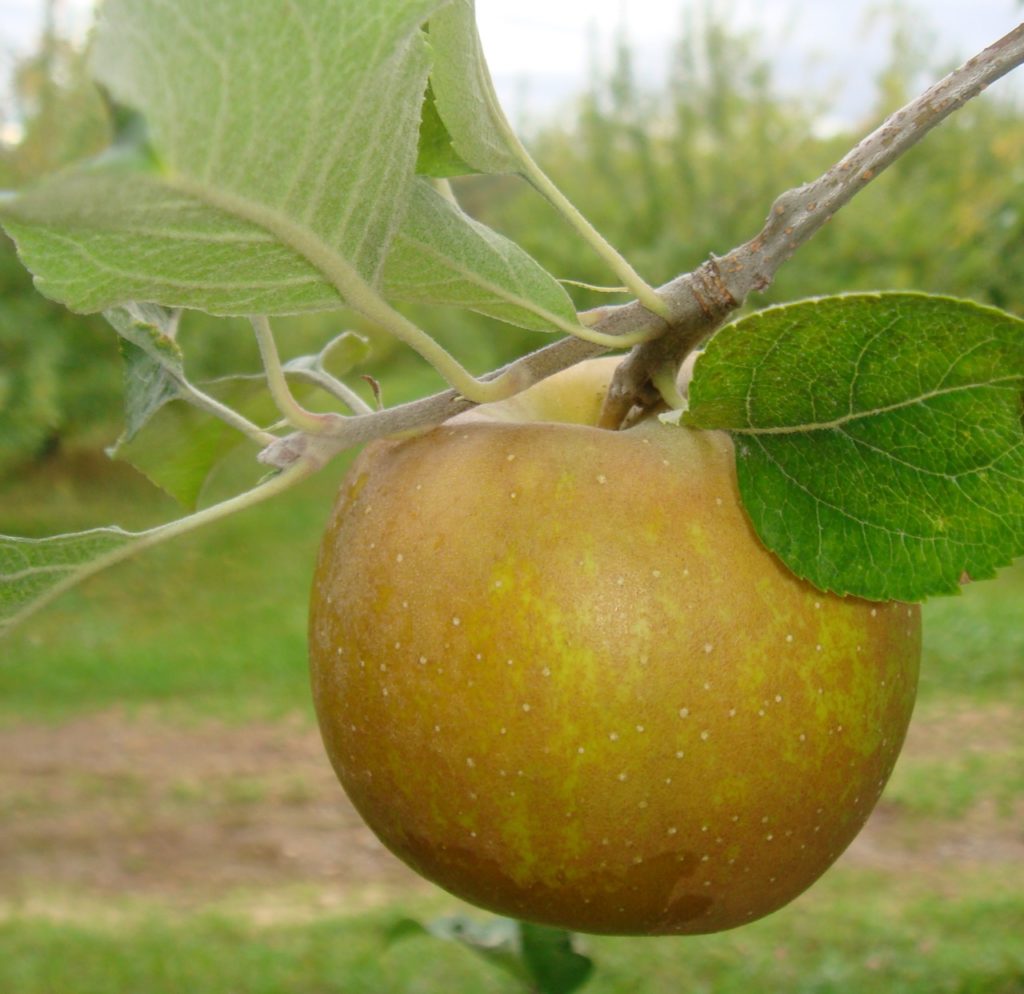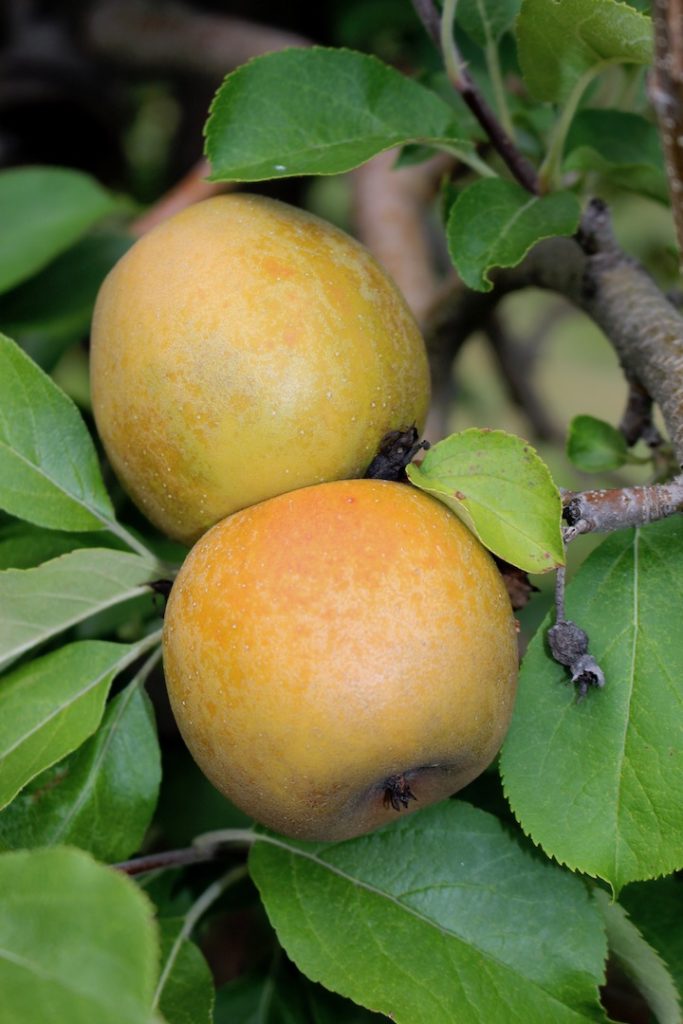
THEY ARE AMONG the most flavorful of apples. They excel in ciders, fresh and hard. Yet russet apples remain a mystery to many, and most are hard to find.
Russeting is a phenomenon that can affect both apples and pears, resulting in a rough, brownish skin on the fruit, almost like fine sandpaper. It can appear on any apple variety, although it is more commonly found on yellow apples than red ones, often around the stem.
Apples can develop russet for many reasons, including cool, wet weather, frost, viruses, fungi, and bacteria. The important thing for consumers to know is that it is perfectly harmless to eat.
In some cases, russet is genetic, covering the entire apple or appearing in random patterns as though drizzled on. Russet varieties, mostly heirlooms, collectively are known for several qualities:
Due to their outstanding storage abilities, russet apples evoke an earlier, pre-refrigeration era, when cider was king. It is no coincidence that their modest comeback coincides with the surge of interest in fresh and hard cider.
But it has been well over a century since Roxbury Russets and Golden Russets were routinely packed in wooden barrels and shipped to destinations like London, England, from Portland, Maine, or to the West Indies from Boston, as they were for much of the 1800s.

Discovered before today’s mass marketing age, russet apples have some of the most colorful names of any fruit: Ashmead’s Kernel, Belle de Boskoop, D’Arcy Spice, Pitmaston Pineapple.
Their actual colors are more subtle, though. Most russets ripen in mid- to late October, with the hues of late fall: rich browns and orange, copper, and olive green.
Russet apple varieties tend to be small in size, another strike against them in today’s super-sized world. Some, like Pomme Grise, while small, are perfectly round and oblate. Others are tiny or misshapen. Pitmaston Pineapple is not much larger than a grape! Knobby Russet is so small and gnarly in shape that it is a wonder it has survived at all.
These various drawbacks prevent most russets from being grown on a large scale. Yet their superior flavors have inspired devout followers, especially among artisan fresh and hard cider producers, many of whom are replanting them today.
Here are some of the adjectives that have been used to describe russet apple flavors: vanilla, orange, pear, nutmeg, lemon, and tea (Ashmead’s Kernel); lemon (Belle de Boskoop); nutmeg (D’Arcy Spice); nut and pear (Hudson’s Golden Gem); honey (Golden Russet); nutty (Knobby Russet); nutty, orange (Orleans Reinette); nutty, honey, pineapple (Pitmaston Pineapple); nutty, spicy (Pomme Grise); spicy (Roxbury Russet); spicy, nutty (Zabergäu Reinette).
If you can find them (check out our Apple Finder to see who grows what) and overlook their small size and unusual skin, your tastebuds will be richly rewarded. In any event, you may find yourself imbibing their complex flavors throughout the year in special blends of fresh or hard cider.
Drink up!








